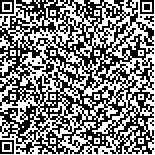| 摘要: |
| cGAS(cyclic GMP-AMP synthase)基因是近几年来新发现的先天免疫中一个新型的信号分子。作者基于大黄鱼(Larimichthys crocea)基因组信息,用cDNA末端快速扩增(RACE)技术在鳃组织中克隆鉴定了cGAS基因cDNA全长序列:包含1个231 bp的5'端-非翻译区(5'-UTR)、207 bp的3'-UTR和1 488 bp的开放阅读框(ORF),命名为Lc-cGAS-like X1。该基因编码1个由495个氨基酸残基组成的多肽,预测的分子量(Mw)大小为56.57 kDa,理论等电点(pI)为9.45;序列分析表明其预测的蛋白无信号肽,第115~431位氨基酸序列为Mab-21功能域,第470~492位氨基酸序列为跨膜结构域。基因组全长3 153 bp,包含8个外显子和7个内含子,所有内含子的剪切特点都符合GT-AG规则。同源比对结果显示:Lc-cGAS-like X1与鱼类cGAS的相似性大于66%,与高等脊椎动物的相似性较低。系统进化分析表明Lc-cGAS-like X1与鱼类cGAS聚成一支。荧光定量PCR(qPCR)检测显示Lc-cGAS基因(X1/X2两种剪切体)在大黄鱼9种组织中均有表达,其中在鳃中的表达量最高;刺激隐核虫感染后,大黄鱼免疫器官头肾中Lc-cGAS mRNA分别在刺激隐核虫幼虫感染阶段和滋养体脱落阶段出现了极显著上调(P<0.01);解毒器官肝脏中分别在滋养体脱落阶段和细菌感染阶段出现极显著上调变化(P<0.01)。本研究结果暗示大黄鱼cGAS基因参与了大黄鱼感染刺激隐核虫的免疫防御过程,为进一步了解鱼类cGAS基因的多样化功能提供参考。 |
| 关键词: 大黄鱼(Larimichthys crocea) 刺激隐核虫(Cryptocaryon irritans) cGAS 基因鉴定 基因表达 |
| DOI:10.11759/hykx20180509002 |
| 分类号: |
| 基金项目:广东越群海洋水产动物苗种繁育及饲料研发技术体系院士工作站项目(2014B090905008) |
|
| Molecular identification of cyclic GMP-AMP synthase-like (cGAS) isoform X1 of Larimichthys crocea and its expression change after the challenge with Cryptocaryon irritans |
|
ZHENG Li-bing, HONG Yue-qun, HONG Yu-jian, SUN Kai-hui, HONG Yu-cong
|
|
Guangdong Yuequn Ocean Biological Research Development CO., LTD, Jieyang 515500, China
|
| Abstract: |
| Larimichthys crocea, one of the important marine economic fishes, comprises the largest yield for a single species in the Chinese marine net-cage farming. The marine white spot disease caused by Cryptocaryon irritans is a huge threat to the large yellow croaker farming industry. The parasitism can result in not only tissue damage but also secondary bacterial infection. Recently, cyclic GMP-AMP synthase-like (cGAS) was found to recognize dsDNA in the cytoplasm to induce the production of type I IFN or inflammatory cytokines. In this study, cGAS-like isoform X1 was obtained from L. crocea by the rapid amplification of cDNA ends (RACE) method based on the partial genome information. The results demonstrated that the full-length cDNA of Lc-cGAS-like X1 was 1 925 bp, consisting of a 5'-untranslated region (UTR) of 231 bp, 3'-UTR of 207 bp, and an open reading frame (ORF) of 1 488 bp, which encoded a peptide with 495 amino acid residues. The full-length genome was 3 153 bp, consisting of eight exons and seven introns. All the exon-intron boundaries were in accordance with the classical GT-AG rule (GT/intron/AG). The predicted molecular weight (Mw) of the encoding protein was 56.57 kDa, and the theoretical isoelectric point (pI) was 9.45. There was no signal peptide in the N-terminal, and three potential glycosylation sites were predicted in the deduced amino acids. A transmembrane region and an Mab-21 domain were identified from the 470-592 and 225-431 amino acid sequence, respectively. The results of multiple alignment revealed that Lc-cGAS-like X1 shared the highest identity of 99% with Lc-cGAS-like X2, and the identity of Lc-cGAS-like X1 shared with fish was >66% and that with high vertebrates was about 38%-40%. Phylogenetic analysis revealed that the cGAS cluster was primarily in accordance with the traditional classification. The q-PCR method detected the transcripts of Lc-cGAS (two isoforms) distributed in all nine examined tissues of L. crocea, which were most abundant in the gill. After the challenge with C. irritans, the Lc-cGAS mRNA in the head kidney exhibited highly significant upregulation (P<0.01) during the infective and parasitic stages, whereas the Lc-cGAS mRNA in the liver showed highly significant upregulation (P<0.01) during the trophont-release stage and the secondary bacterial infection stage. Overall, these data confirmed the involvement of Lc-cGAS in the immune response to C. irritans. |
| Key words: Larimichthys crocea Cryptocaryon irritans cGAS gene cloning gene expression |
